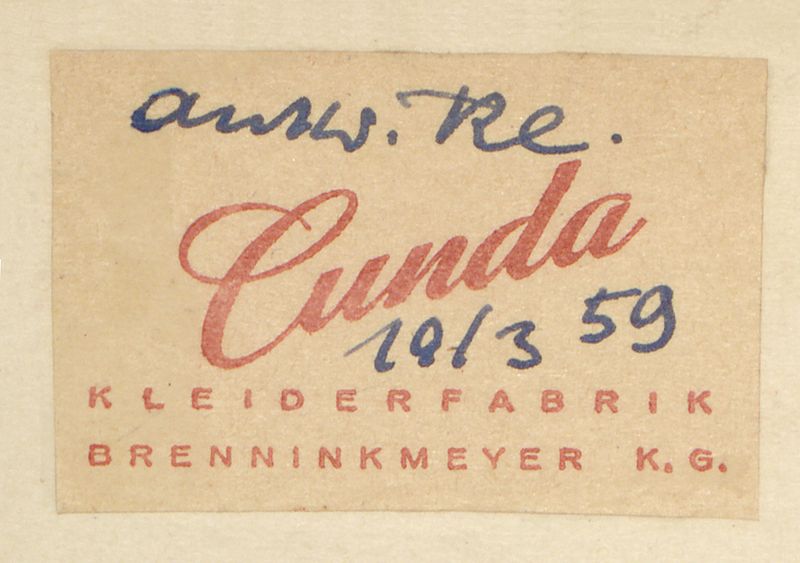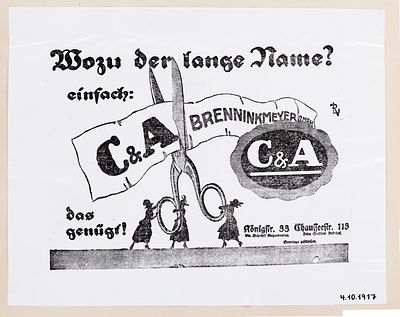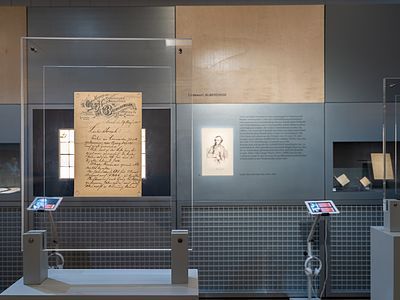CUNDA, KNÖS, AND KNASPELHUTSCHE
In Search of Company Vocabulary
Press Release
CUNDA, KNÖS, AND KNASPELHUTSCHE
In Search of Company Vocabulary
DAS Forum | November 6, 2024, to May 4, 2025
In search of C&A’s corporate vocabulary, the exhibition CUNDA, KNÖS, AND KNASPELHUTSCHE in the DAS Forum traces the identity-forming and practical functions of secret language communication using documents, objects, photographs, and archival materials from the company’s own collection. One focus here is on the development and significance of the secret language of the Tüötten. The exhibition reveals how language codes were used to protect business information and foster identity.
In Search of Corporate Vocabulary
In 2009, the entrepreneurial Brenninkmeijer family founded the Draiflessen Collection in Germany, their home country, where the company and family archives are also kept. The family that owns C&A follows in the tradition of the Tüötten, individuals who engaged in trade, particularly in Westphalian linen. They started in Mettingen and the surrounding villages from the seventeenth century onward and then traveled through northern Europe, from the Netherlands in the west to the Baltic states in the east. These itinerant traders developed a secret language that only they understood—the Humpisch or Bargunsch. The name “Draiflessen” is made up of words from this secret language (drai meaning three, trinity, turn, trade; flessen meaning flax, linen, home) and thus refers to the origins of the entrepreneurial family, which is now active on an international scale.
Secret Language as Protection
In the heyday of the Tüötten during the eighteenth century, the secret language was mainly used to protect business secrets when traveling. With the decline of itinerant trade and the establishment of stationary stores in the nineteenth century, the language lost its practical use and was spoken less and less. However, keeping certain information secret in day-to-day business still remained relevant—especially turnover and sales figures that should not be disclosed to the competition. It was not only at C&A that a simple encryption technique based on a code word was established for business figures, to which only long-standing and trusted employees were privy.
Secret Language as an Expression of Special Identity
In groups of any kind, a specific jargon can develop as an expression of a particular identity, the meaning of which remains hidden from outsiders. Over time, C&A also developed its own vocabulary, the individual terms of which were not readily understood outside the company. For example, the initials of the two company founders Clemens and August Brenninkmeijer are hidden behind the company name C&A—not everyone may be aware of this. Upon closer inspection, the initials of the founders can also be found in other company names from the C&A corporate cosmos. The exhibition invites you to discover this and other “secrets.”


CUNDA, KNÖS AND KNASPELHUTSCHE

Postmark of Cunda Kleiderfabrik Brenninkmeyer K.G., 19.03.1959

Eugen Teeken, stained glass window from the vault of House Telsemeyer, Mettingen (detail), around 1962

Earliest written mention of encrypted business figures according to the code word ‘Alberdingk’ in a letter from Hermann August Brenninkmeijer to Bernhard Joseph Brenninkmeijer, 1905

Anzeige C&A, October 4, 1917

Vocabulary cards from Fritz Hettlage on the secret language of the Tüötten

Exhibition view CUNDA, KNÖS AND KNASPELHUTSCHE

Exhibition view CUNDA, KNÖS AND KNASPELHUTSCHE

Exhibition view CUNDA, KNÖS AND KNASPELHUTSCHE

Exhibition view CUNDA, KNÖS AND KNASPELHUTSCHE